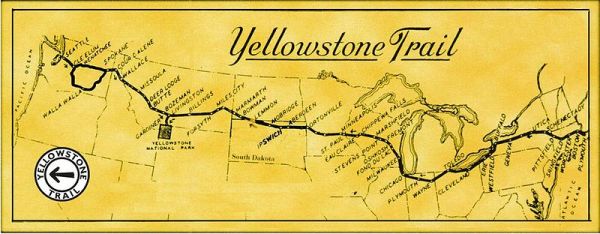 As I paused at this quiet spot to shoot this red brick road near Redmond the other day, I had a hard time believing that this was a section of the transcontinental Yellowstone Trail highway back in the early 1900s.
As I paused at this quiet spot to shoot this red brick road near Redmond the other day, I had a hard time believing that this was a section of the transcontinental Yellowstone Trail highway back in the early 1900s.
At one-time it buzzed with automobiles heading back and forth across the Northern Tier states. People traveled it for business and pleasure.
Today it's a 1-mile-long connector between the busy Redmond-Fall City Road (Route 202) and Union Hill Road on the outskirts of Redmond. A historical marker notes that it's the longest remaining brick road in King County.
Built in 1901
Now renamed 196th Avenue NE, the present alignment of Mattson Road was created in 1901 to detour a long grade on the original route to Seattle from over the Snoqualmie Pass.
On days like this, with spring showers sweeping across the landscape, it frequently became muddy and impassable, according to the King County History Link website. James Mattson and neighbors prevailed on the county to pave it for automobile traffic in 1913.
The county used bricks manufactured at a plant in Renton, located at the site of the trailhead of the Cedar River rail-trail.
Coast-to-coast
About that same time, a group of businessmen from South Dakota got together to create and promote a transcontinental road across the US. At first they just wanted a good road between their hometown of Ipswich and Aberdeen. They soon latched onto the idea of a good route to the tourist destination of Yellowstone National Park — a route that happened to pass through Ipswich.
This was before the creation of federally funded highway routes. With the help of associates in other states, the businessmen picked a route and lobbied for improvements on its various sections.
Western Washington
Mattson Road became one of the Yellowstone Trail sections. In Western Washington, the trail topped Snoqualmie Pass on the old Sunset Highway, then proceeded through North Bend, Snoqualmie and Fall City to this short section of road. It passed through Redmond and paused at the ferry dock in Kirkland where travelers took a ferry across Lake Washington to Madison Street in Seattle. [An in-depth description of the route is available at The Yellowstone Trail through Washington state.]
The businessmen created maps and information booklets to stimulate tourism along the route. It remained popular until the onset of the Great Depression in 1929 and the old association eventually disbanded.
Finding the trail
Today, the Yellowstone Trail Association has state-by-state and mile-by-mile descriptions of the old route, complete with various roadside attractions.
To get there, I pedaled over to Issaquah then up the old Burlington Northern Railroad line that has become the East Lake Sammamish Trail. I cut across on 186th to Redmond-Fall City Road, then turned left onto 196th. There are only a few houses on this road and very little traffic, although it was plenty slick in the rain.
I wonder if, 100 years from now, someone will pedal along the all-but abandoned Interstate 405 in Bellevue and marvel that thousands of motor vehicles once passed through there every hour.



Recent Comments